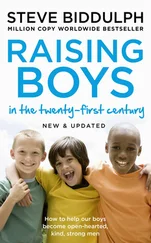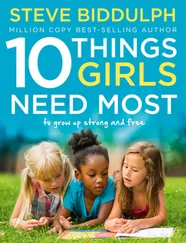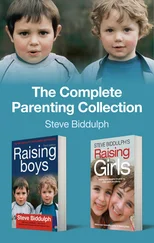The family’s seeking help – not just for Kaycee, but for themselves – was a brave step, and in fact proved to be a turning point. We will return to Kaycee and her parents at the very end of the book, to let you know how it all worked out.
A Marked and Sudden Change
In the last ten years there has been a big change in the lives of girls. And it’s affecting them at every age, from babyhood to teens. While the same wishes and dreams are there for girls journeying towards womanhood that we had in our day, the world is forcing changes on them that are on a whole different scale. In particular, things are beginning to happen when they are younger .
This is a key point to keep in mind about girls’ situation today, and it was first made by Maggie Hamilton in her book What’s Happening to Our Girls? To understand our daughters, we have to realise that their childhood is not like ours . To put it bluntly, our 18 is their 14. Our 14 is their ten . That’s in terms of the pressures, the behaviours, and what they are supposed to be, and act like, according to the peer norms that exist today – and our failure to protect them, for we are partly responsible. We – and that’s all of us, parents, relatives, friends and society – are not supporting girlhood in the way we once did. We haven’t put enough adult time and care around our daughters, or taught them well enough.
In the last ten years a greedy corporate world has realised that girls, and especially pre-teen girls , are a soft target. Companies saw that there were enormous profits to be made in exploiting their anxieties (or in fact creating those anxieties) about everything from skin to weight to friendship to clothes to even making it into adulthood. In boardrooms and advertising agencies, magazines and media outlets, the war on girls began. And it succeeded. Everywhere she looks, today’s young girl sees messages that make her feel she is not good enough, that imprison her in cramped and narrow ideas of how she is supposed to look, think and act. Never before has girlhood been under such a sustained assault, ranging through everything from diet ads, alcohol marketing, fashion pressures, to the inroads of hard pornography into teenage bedrooms.
The result is that many girls have lost four years of childhood peace and development . They are being forced out of childhood when they have not yet completed it, or even fully enjoyed it. The result is girls in enormous pain and confusion. They try to act grown-up but they can’t. They are filling up the mental health clinics, the police stations and emergency rooms, the alcohol and drug treatment programmes in numbers never seen before.1
If we are awake to what is going on, we can prevent this. Partly it’s through the love we give, partly the environment we create for them with support and interests, and partly the protection from the stupid and exploitive media messages from the world around them. I have a favourite saying that has often helped me: ‘We can’t stop the birds of sorrow from flying through our lives, but we don’t have to let them make nests in our hair !’ We can live in this world, but we don’t have to swallow everything it offers us. We can choose for ourselves and for our daughters the experiences that make us strong, happy and alive. That’s what Genevieve and her parents did …
Genevieve, like Kaycee, is also 17, also in Year 12. On first meeting, Genevieve seems a little nervous and shy, but she soon relaxes when she gets to know you. Her conversation is full of ideas, concerns and funny stories and perspectives on things. She switches in a moment from excited child to thoughtful young adult, as is typical of someone just on the edge of womanhood. She doesn’t have the tough exterior of Kaycee, but then, perhaps she doesn’t need to. Her story is a very different one.
Genevieve does not have a boyfriend right now. She would love to, but is wary; she knows that young love is not always easy. Also, she finds the boys of her own age frustratingly hard to hold a conversation with, and longs to meet more mature, communicative boys when she goes to university.
Genevieve’s friends at school are a warm and friendly bunch, not the high flyers, but the quieter, more natural kids. They look out for each other and also, if there is a newcomer or someone left on the outer edges of the group, they are more likely to include them and make them welcome. As a result, they are a large, ramshackle group, slightly dorky and uncool but not too worried about it.
Genevieve did go out with a boy at 15, and this was an intense experience for her. Justin was her own age and they met early in the school year. They spent time together as often as they could, taking long walks, holding hands, having soulful conversations. He was more experienced sexually, though, and after a few months, began pressuring Genevieve to ‘go further’ when they were alone together. Other girls had had sex with him in the past and he really wanted this with Genevieve too.

Genevieve is close to her mother, and accustomed to talking over pretty much everything in her life with her. In fact, her mother joked that for every hour spent with Justin, Genevieve spent another hour discussing what had taken place, what he said, what it might mean, what she said back, and so on! While many girls do this detailed debriefing with their friends, Genevieve was used to discussing her innermost thoughts with her mum, and so this new problem naturally became part of their ongoing conversation. As a result, her mum was involved in dealing with this new sexual pressure on her daughter, and able to offer her help.
To her great credit, Genevieve’s mum did not panic, and did not try to take control of the situation by telling Genevieve what to do. She later told me that she would, if necessary, have brought in some limits on how and where the pair could meet, since they were below the legal age, as well as the wise age, to start having sex. In other words, she would not allow her daughter, at just 15, to be out of her depth in a situation where she might not be emotionally and physically safe . At the same time, Genevieve’s mum supported, cautiously, her wish to have a friendship with a boy. She would drive her daughter into town to meet Justin to go to a movie or meet up with friends, or bring him over to visit their house.
This remarkably sensible mother had a low-key but thoughtful response to her daughter’s questions. Instead of ‘laying down the law’ as a first strategy, she simply helped Genevieve to explore her own wants. What did she feel she wanted? What was her body telling her? What did she think was the course of action she would feel good about, long term?
She did this in a quiet, casual kind of way that gave Genevieve real space to reflect. Her mum had that knack of listening intently without pressure, so that Genevieve knew that she had her full attention, and so her thoughts and feelings tumbled out effortlessly.
Genevieve’s inner signals were quite clear. She really liked Justin, she liked being with him, but she felt uneasy and rather crowded when he was too physical with her. It was all a bit too intense . She hoped their relationship would strengthen and grow, but she wanted it to take its time. Her mother listened, and nodded, and reflected back to her daughter, ‘It sounds like you really aren’t ready to have sex with him, you don’t want it to go that way right away?’ Genevieve said no, but she was worried what would happen if she rejected Justin’s advances repeatedly. They talked over how she could let Justin know her feelings and wants.
Читать дальше













